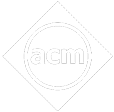- Written By
Akshay.MS
- Last Modified 25-01-2023
Parallel Plate Capacitors
The arrangement of electrodes and insulating material or dielectric forms Parallel Plate Capacitors. A parallel plate capacitor can only store a finite amount of energy before the occurrence of dielectric breakdown. Electric field inside the capacitor has a direction from positive to negative plate.
This is a very important topic because questions from this chapter are sure to be asked in the examination. In this article, let us learn about the charge on a Parallel Plate Capacitor, formulas for a Parallel Plate Capacitor, derivation of the Parallel Plate Capacitor formula, and a few solved examples of problems asked in the Class 12 examination.
What are Parallel Plate Capacitors?
A parallel plate capacitor is formed by placing two conducting plates parallel of equal cross-sectional area parallel to each other separated by some fixed distance. These plates can be circular or rectangular shaped. They are generally used in rechargeable systems. The picture given here shows a parallel plate capacitor.
When a parallel plate capacitor is connected across a potential difference, one of the plates becomes positively charged, and other plates become negatively charged due to high potential and low potential. Because of this potential difference, an electric field is induced between the plates from the plate with a positive charge to the plate with a negative charge, as shown in the diagram.
Formula of a Parallel Plate Capacitor
The direction of the electric field is defined as the direction in which the positive test charge would flow. Capacitance is the limitation of the body to store the electric charge. Every capacitor has its capacitance. The typical parallel-plate capacitor consists of two metallic plates of area A, separated by the distance d.
The parallel plate capacitor formula is given by:
C=ε0A/d
Derivation of the Formula for a Parallel Plate Capacitor
As we know that electric field lines originate from a positive charge and terminate at a negative charge, the direction of the electric field from both the plates will be the same, and it will be from positive plate to negative plate. The electric field due to the individual plate can be formulated as;
\(E=\frac{\sigma}{2 \varepsilon_{0}}\)
Here, \(\sigma\) is the charge density of the plate, and \(\varepsilon_{0}\) is the permittivity in a vacuum as there is no medium between the plates of the capacitor. Since the electric field due to both the plates has the same magnitude and direction, the net electric field between the plates will be;
\(E_{n e t}=\frac{\sigma}{\varepsilon_{0}}\)
If the magnitude of the charge on each plate is \(Q\) and the cross-sectional area of each plate is \(A\), then the net electric field will be;
\(E_{n e t}=\frac{Q}{A \varepsilon_{0}}\)
As the potential difference connected across the plates is \(V\), and the distance between both the parallel plates is \(d\), we can write for the net electric field as;
\(E_{n e t}=\frac{V}{d}\)
Comparing both the equations for the electric field;
\(\frac{V}{d}=\frac{Q}{A \varepsilon_{0}}\)
\(\frac{Q}{V}=\frac{\varepsilon_{0} A}{d}\)
But the ratio of the charge stored per unit potential difference applied is known as capacitance. Hence the capacitance of a parallel plate capacitor can be written as;
\(C=\frac{\varepsilon_{0} A}{d}\)
From this, we can say that the capacitance of a parallel plate capacitor depends on \(– (1)\) cross-sectional area of the plates, \((2)\) distance between both the plates, and \((3)\) medium between both the plates.
Solved Examples
Q.1. What is the percentage change in capacitance of a parallel plate capacitor when a dielectric slab of dielectric constant \(3\) is inserted between its plates?
Ans: When a dielectric is inserted between the plates of a capacitor, its capacitance will be;
\(C=K C_{0}\)
\(\therefore C=3 C_{0}\)
Thus, a change in capacitance of the capacitor will be
\(\Delta C=C-C_{0}\)
\(\Delta C=3 C_{0}-C_{0}\)
\(\therefore \Delta C=2 C_{0}\)
The percentage change in capacitance will be given by;
\(\%\) change \(=\frac{\Delta C}{c_{0}} \times 100\)
\(\therefore \%\) change \(=200 \%\)
Hence, the percentage change in capacitance of this capacitor is \(200 \%\)
Q.2. A capacitor of capacitance \(100 \mu F\) is charged to a potential of \(20 V\). Find the amount of energy stored in it. What will be its energy after a dielectric slab of dielectric constant \(2\) is inserted between its plates?
Ans: The capacitance of the capacitor \((C)=100 \mu F\)
The potential difference across its plates \((V)=20 \mathrm{~V}\)
The dielectric constant of the dielectric slab \((K)=2\)
Energy stored in a parallel plate capacitor is given by the equation;
\(U=\frac{1}{2} C V^{2}\)
Substituting the values
\(U=\frac{1}{2}\left(100 \times 10^{-6}\right)(20)\)
\(\therefore U=1 \,mJ\)
Since the dielectric of constant \(2\) will make the capacitance double, its energy will also become double
\(\therefore U^{\prime}=2 U\)
\(\therefore U^{\prime}=2 m J\)
Q.3. Find the equivalent capacitance across \(A\) and \(B\) in the given circuit:
Ans: As we can clearly see in the circuit, all the \(3 \,μF\) capacitors are connected in series. Thus, their equivalent capacitance will be given by;
\(\frac{1}{C_{1}}=\frac{1}{3}+\frac{1}{3}+\frac{1}{3}\)
\(\therefore C_{1}=1 \mu F\)
Similarly, \(2 \mu F\) and \(6 \mu F\) capacitors are also connected in series. Thus, their equivalent capacitance will be;
\(\frac{1}{C_{2}}=\frac{1}{2}+\frac{1}{6}\)
\(\therefore C_{2}=1.5 \mu F\)
Now, both these equivalent capacitors will be in parallel. Hence, the equivalent capacitance of the circuit between points \(A\) and \(B\) will be;
\(C=C_{1}+C_{2}\)
\(C=1+1.5\)
\(\therefore C=2.5 \,\mu F\)
The equivalent capacitance between \(A\) and \(B\) is \(2.5 \,\mu F\)
We hope this article on Parallel Plate Capacitors has given you all the information you need to solve the problems based on it. Stay tuned to embibe.com for more such informative articles.











































